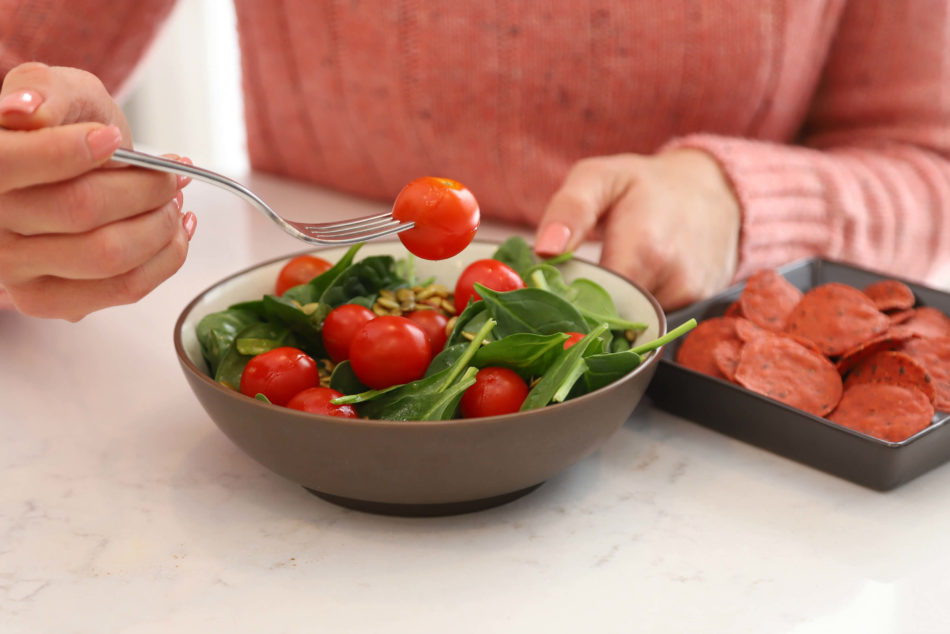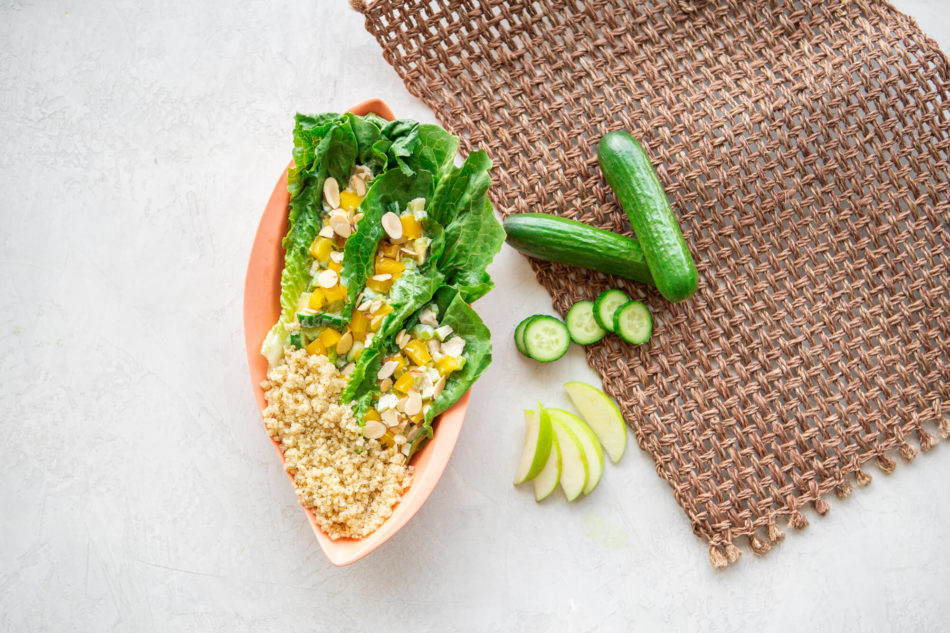National Nutrition Month: More Than Food
It is well known that spinach contains more nutrition than potato chips and that “fast-food” meals typically have a higher sodium content than meals we make at home. It is also true that individuals and families that plan what they will eat and prepare food ahead of time, such as pre-cut veggies and homemade muffins, are more likely to make healthier food choices. So, why then do we have such high rates of obesity and chronic disease in North America? It’s because knowledge doesn’t always lead to behaviour….and that becomes the roadblock for many.
March is National Nutrition Month and the theme this year is “More Than Food”. I love this theme because it reminds us that being “healthy” isn’t just about the food we eat, it’s about the practices, attitudes, beliefs, and behaviors that surround food. And since these are all areas that develop and evolve over time, they can sometimes take effort to alter. As a dietitian, I regularly meet with clients who are looking for support in this area. They know what healthy food choices are, but they struggle to put them into practice. Perhaps you can relate to this. If so, I am hoping that one or more of the following tips will be helpful for you in the next steps of your health journey.
Create S.M.A.R.T Goals
When creating a new goal, it is easy to say it, and MUCH harder to follow through. This is because achieving a goal takes more than the desire to achieve it: it takes TIME and ENERGY. And if we want to maintain the goal, we need new habits. A wonderful way to start a new habit is to establish it as a SMART goal. This means that it is SPECIFIC, MEASURABLE, ATTAINABLE, REALISTIC, and TIMELY. Let’s take the example of eating more vegetables. That is a great goal, but what does it really mean? Here is a SMART version of that goal:
“I am going to eat ½ cup of vegetables at my morning and afternoon snack and 1 cup of vegetables at lunch and supper every day.”
Okay, let’s check to see if we have matched all aspects:
SPECIFIC – Servings of vegetables
MEASURABLE – ½ cup and 1 cup
ATTAINABLE / REALISTIC – Only you can decide this – things to consider are the resources of time, energy, and money
TIMELY – Every day
Establish Set Times to do the Tasks that Lead Towards your Goal
It is easy to state the goal above, but it may be very challenging to achieve it. If this is your current goal, then it is important to set times in your calendar to get the vegetables from the grocery store, wash and prepare the vegetables, and put together meals and snacks. Some of these tasks are done weekly and others every 1-3 days. Even if you only need 20 minutes to prepare and eat a healthy meal, the meal will not seem realistic if you did not leave 20 minutes open in your schedule.
You may also want to set aside time once or twice a month to find new veggie-packed recipes as variety can help keep healthy eating interesting. The Nature Fresh Farms Recipes page is packed with recipes that incorporate a variety of nutrient-dense vegetables from soups, salads, and dips to pastas, pizzas, and other main course dishes. We are passionate about supporting busy individuals and families to take their desire to eat healthy and put it into practice!
Create a Mouth to Mind Connection
Have you ever scrolled Facebook or caught up on emails while eating a snack, and then gone back for a second helping because you felt like your first serving disappeared too quickly? If so, you are not alone. We live in a fast-paced world and we are surrounded by technology in most (if not all) areas of life. As such, phones, computers, and other screens have become commonplace to use during mealtimes. While we may feel great about the “multi-tasking” at the time, the distraction that these screens provide brings more harm than good.

When focusing on anything but the food we are consuming, we reduce the brain’s ability to truly connect with what and how much we have eaten. As such, we may over-eat or under-eat. In light of this, and also to promote social interaction as part of mealtimes, it is recommended that we put all screens and technology aside while eating. So, if this is the knowledge we have, how do we put it into action? Here are 3 tips you many want to try:
- Have a designated technology basket in your home or office where you (and others in your home or office) set your devices when it is time to eat.
- Turn off all sounds and notifications while you eat.
- Have a piece of paper with you where you can write down any task that comes to mind while you eat. This will reduce your temptation to grab your computer or phone to “send one quick email”. With it written down you can remember to complete the task after you are done eating.
Embrace Moderation & Remove the “All or Nothing” Mentality
As the saying goes “Rome wasn’t built in a day”! And your health habits won’t be established in a day either. In fact, some days may feel like a step in the wrong direction! Being aware of this and ready to make the best choices possible based on the resources you have available at the time is instrumental as you work towards your goal. If you find yourself feeling upset about a choice you made that did not align with your goal, take a moment and assess what may have led to this choice. Perhaps you can learn from your mistake and prevent it from happening again.
Reflect on Your Relationship with Food & Build Self-Efficacy
I had a client recently ask me “Will I ever be able to stay on track with my food choices?”. This was not the first time I have been asked this question. Changing food habits and creating new lifestyle choices is an on-going effort. And the more we try without feeling successful, the harder it seems to climb the mountain.

My best advice for this is to set small S.M.A.R.T goals that create opportunities to build self-efficacy. For example, instead of saying “I am going to add vegetables to every meal and snack I eat,” start with, “I am going to add a serving of vegetables to my lunch.” This is a smaller goal that may be more realistic and attainable. And in meeting the goal, you build a greater belief in yourself that you can meet the next goal too. This is how we build self-efficacy. And eventually, the goal of eating vegetables 5-6 times per day becomes very realistic because you built up to it and you have a belief in yourself that you WILL do the things you say you will do!
More Nutrition Resources
Here are a few more resources to help you succeed with your nutrition goals:
National Heart Month: How to Build a Heart-Healthy Meal
Adding More Veggies to Your Diet in 2020
Dietitian-Approved Tips for Vegetarian Cooking
You can also head to the Motherhood and Meals Blog for even more tips, tricks, and recipes that focus on making nutritious food choices!



